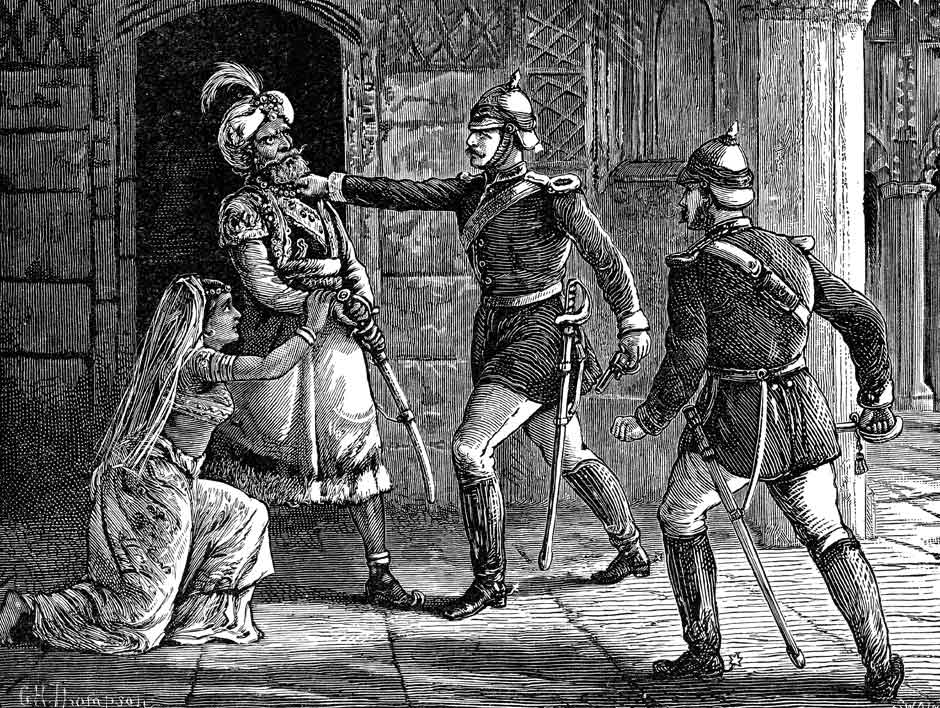The image above is subject to copyright.
Copyrights for Photographic Reproduction
Les feuillets numérisés des registres d'inventaires historiques sont soumise à un copyright.
Droits de reproduction photographique
 Copie dactylographiée en 13 volumes de l'Inventaire original MEG manuscrit
Copie dactylographiée en 13 volumes de l'Inventaire original MEG manuscrit
Registres_inventaire_dactylographie/926.pdf
 Registre d'inventaire original - non indexé
Registre d'inventaire original - non indexé
Registres_inventaire_original/Registre_07_019252_021230.pdf
Power within a society is expressed firstly by the superiority of physical force and weapons. It is then consolidated by the development of administrative, governmental and economic systems and a hierarchy, which may be highly centralised, as in China and Japan, or more diversified, as in India or the former East Indies.
The Mughal dynasty ruled India from 1526 to 1858, with some interruptions. Their most brilliant sovereign was Akbar (1542-1605), and the symbol of their culture remains the Taj Mahal mausoleum in Agra. The country was next ruled by the British Raj until its Independence in 1947, when it became a republic.

Arrest of the last Mughal emperor by the British officer William Hodson in 1857. Engraving from Cassell’s Illustrated History of England © Eon Images
© 2021 Musée d'ethnographie, Genève